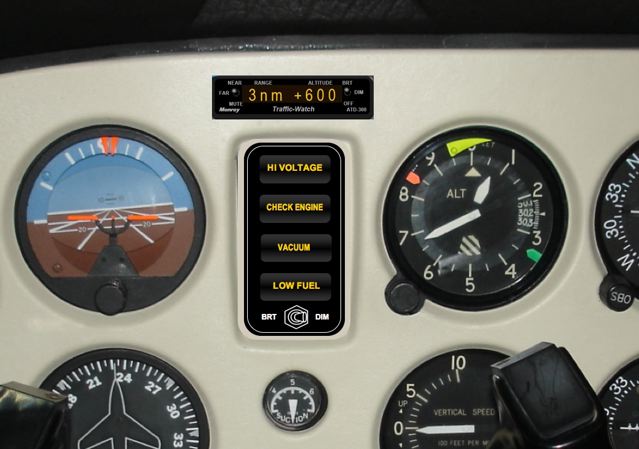 |
St. Louis Flying Club Newsletter - 18 October 2008 |
From The President - By Todd Michal

Dear Members,
With the beautiful fall weather we have had lately, especially over the weekends, flying time has picked up.
Thanks for attending the flying club meeting. Based on your inputs, we are proceeding with the purchase and installation of the Fire extinguisher, RPM Sender for the Engine Monitor, Vacuum warning light, and ATD-300 Traffic Warning indicator. Next in priority were the inertial reel shoulder harness and vertical card compass which will be considered for installation in a future club meeting.
The photo below was taken during a formation flight to Herman Missouri on 18 October. John will be uploading some of the other photos to the photo gallery.

Happy Takeoffs!
Todd
![]()
 Treasurer's Report - by Mike McBride
Treasurer's Report - by Mike McBride
The club adjusted treasury dropped by about $1000 this month, with the acquisition of the approved upgrades to the plane (RPM sensor, traffic alert system, fire extinguisher). The increased improvement fund contributions will offset those expenditures in the next 6 months, just in time for the annual.
Fuel prices have dropped by about $0.50 per gallon at JetDirect, and our flight rate is now at $68.00 per hour. Flying time was relatively strong this past month at 8.9 hours.
The airport is raising the monthly price of the hangar by $20 starting on January 1, 2009. The new hangar rate should not result in an increase in the monthly dues. The airport is also providing recycle bins on the airport property; I will post their notice on the workbench so everyone is aware of what can / cannot be recycled.
Fly safely!
Mike
![]()
Maintenance - by John 
ATD-300 Traffic Warning - The traffic warning indicator was purchased and we took it up for a test flight on Oct 18th. While sitting on the ramp doing the runup, you could see the warning data for an aircraft in the pattern. The altitude difference information is very accurate as it is calculated from the transmitted transponder Mode C altitude data. The distance information is less accurate as it is calculated by the strength of the signal which can vary due to transponder type, antenna blanking, etc.. When we do the panel installation with the fixed antenna on the lower skin, we should get better results than with the temporary glare shield installation we used for the test.
The modified photo below shows the planned installation of the Traffic warning indicator and our other warning lights. I like this location as it is right in the middle of the key instruments and the warning information is more likely to be seen. The high voltage warning is currently a red light but will be replaced with a legend light. The check engine warning light will be triggered from the engine monitor and will indicate if any of the settings, CHT, temperature differential, shock cooling, oil temp, voltage, etc exceed the values we set. If this light comes on, you look at the engine monitor and the cause of the warning will be blinking on the engine monitor. The vacuum light will be triggered by the new vacuum warning switch we just purchased and when this light comes on, you will need to ignore the vacuum instruments and use the other, non-vacuum, instruments for continued flight. The low fuel light is also triggered from the engine monitor and will indicate when the fuel level is below preset limits.

![]()
Copyright © 1999, St. Louis Flying Club, All rights reserved. Last updated October 2008.